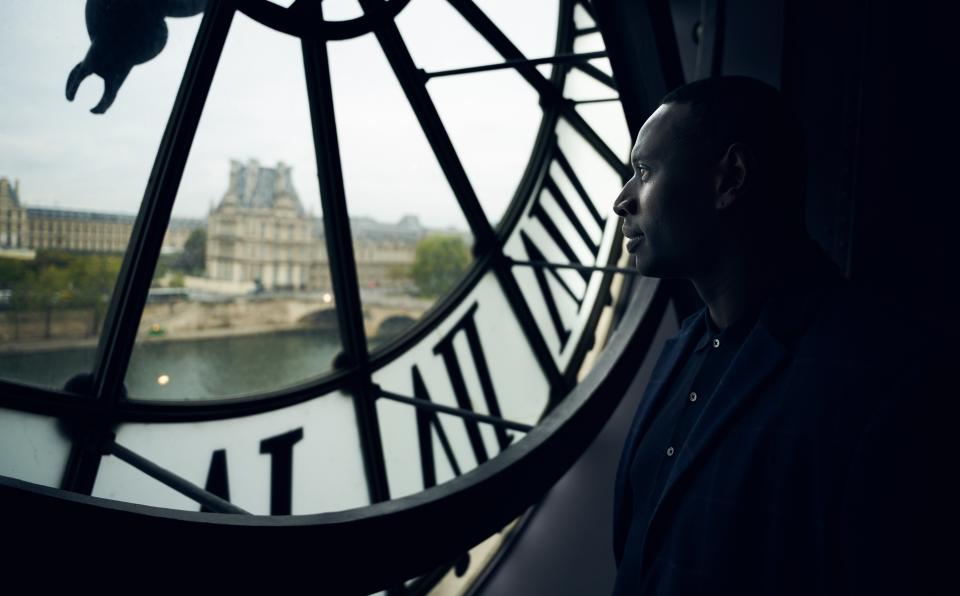On Location: Netflix’s ‘Lupin’ Brings Viewers from the Louvre to a Parisian High School’s Attic
Before diving into the world of Lupin, Netflix’s biggest international hit of the year, viewers may not have known much, if anything, about Arsène Lupin. The fictional gentleman thief, dreamed up by author Maurice Leblanc in the early 20th century, serves as the inspiration for French actor Omar Sy’s chameleon character, Assane Diop. But while Lupin was a new character for many audiences around the world, the Parisian backdrop to Assane’s incredible heists was far more recognizable.
For Lupin production designer Françoise Dupertuis, representing contemporary Paris, with just enough of tried-and-true landmarks thrown into the mix, was essential not only for creating a compelling setting for Assane’s exploits but for understanding his origins and his determined quest for justice.
As viewers gear up for the much-awaited second half of season one, dropping on Netflix on June 11, we spoke to Dupertuis about striking the balance of old and new Paris, the complexity of filming at the Louvre, and the importance of contrasts in bringing director George Kay’s Lupin to life.
There are so many possibilities in depicting Paris on screen. There’s the fantasy audiences are used to seeing and have come to expect, and then there is a more realistic version. How did you approach the challenge of getting that balance right?
We needed to establish a clear visual direction that would step away from what everyone already knows. I’m not from Paris originally. I discovered this city when I was 20 years old and I remember the sense of wonder I had when I arrived. I wanted to capture that curiosity for the city’s many sides in the show. But it was also important to remember that this is a series about Paris through the lens of two characters, the first being Assane Diop, who represents a young, diverse generation from immigrant families, and the other, [Hubert] Pellegrini, who symbolizes a certain traditional France. And [in the show,] one has more means than the other.
Generational and social contrasts needed to come across in the shoot locations. On the one hand, we wanted to show classic, chic Paris—Pelligrini lives around the Parc Monceau—and on the other, the greater Paris region including its suburbs like Montreuil where Assane grew up. We shot at the Conservatoire de Montreuil, adjacent the Croix de Chavaux housing projects. Inner Paris is the go-between, simultaneously the historic Paris that the tourists love, like the Louvre, Châtelet, and the everyday Paris that locals know, which is why we included places such as the Square du Temple and the Marché aux Puces. Our goal was to provide an angle on the city that would feel free to both foreigners and Parisians, and that would highlight just how much Assane works the city, as if it’s its own character, to achieve his goals.

Lupin
The scene at the Louvre in the show’s first episode was iconic. How difficult was it to film at the museum?
What’s particular about the Louvre is that it’s only closed one day a week, and to be able to film there it needs to be closed. That means it was accessible to us only from [Monday] at closing to [Wednesday morning] before it reopened to the public. So the time available to set up all of the equipment, film the scene, and then uninstall everything was extremely limited. We had to imagine the kind of scene that could fit into a 24-hour window while still supporting the overall story and adapting to technical and security constraints. That said, it was magical. Having a museum like the Louvre to yourself and to stand alone in front of the Mona Lisa is absolutely extraordinary.
The largest museum in the world is full of secrets—and stolen art.
Were any scenes filmed in a studio?
Not really! But we didn’t spend much time filming in each location, as everything went so fast—especially since we had several directors, which means we shot by order of director, not by individual scenes. What was important was to prioritize the balance of inside and outside; to ensure we had views of Paris even when filming a scene set indoors. That was possible with existing buildings and spaces like the Musée Nissim de Camondo, where we set Pellegrini’s family home, the town hall of the 3rd arrondissement, and the attic of the Lycée Jacques Decour [high school] used for Assane’s apartment.
What was your favorite location to the shoot?
I loved Assane’s apartment, where we are supposed to see him planning, watching, and thinking. It had to be a bit out of the ordinary. Assane couldn’t have an apartment like any other and we were able to find that. I loved getting to imagine it and build it [into the school’s attic]—I think it worked!

Lupin
Part one's final episode saw Assane in Etretat, a coastal town famous for its arched rock formations that inspired one of books in Leblanc’s series, and is now home to the Le Clos Arsène Lupin, a museum dedicated to the fictional character, set in the author’s former home. Can you give us any clues as to where the next episodes in part two will take viewers?
I don’t want to give away too much but I will say that we start in Etretat and we return to Paris with even more emblematic locations. Then, in episodes six and seven, we follow Assane to an off-putting, abandoned country house on the border of Normandy, halfway between Paris and Etretat. Then, get ready for Assane’s pursuit of Pellegrini in the Théâtre du Châtelet, adjacent to the Seine, which serves as the key backdrop to various dangers awaiting them at the end of the season.
This interview was conducted in French and translated by Lindsey Tramuta.
Originally Appeared on Condé Nast Traveler


